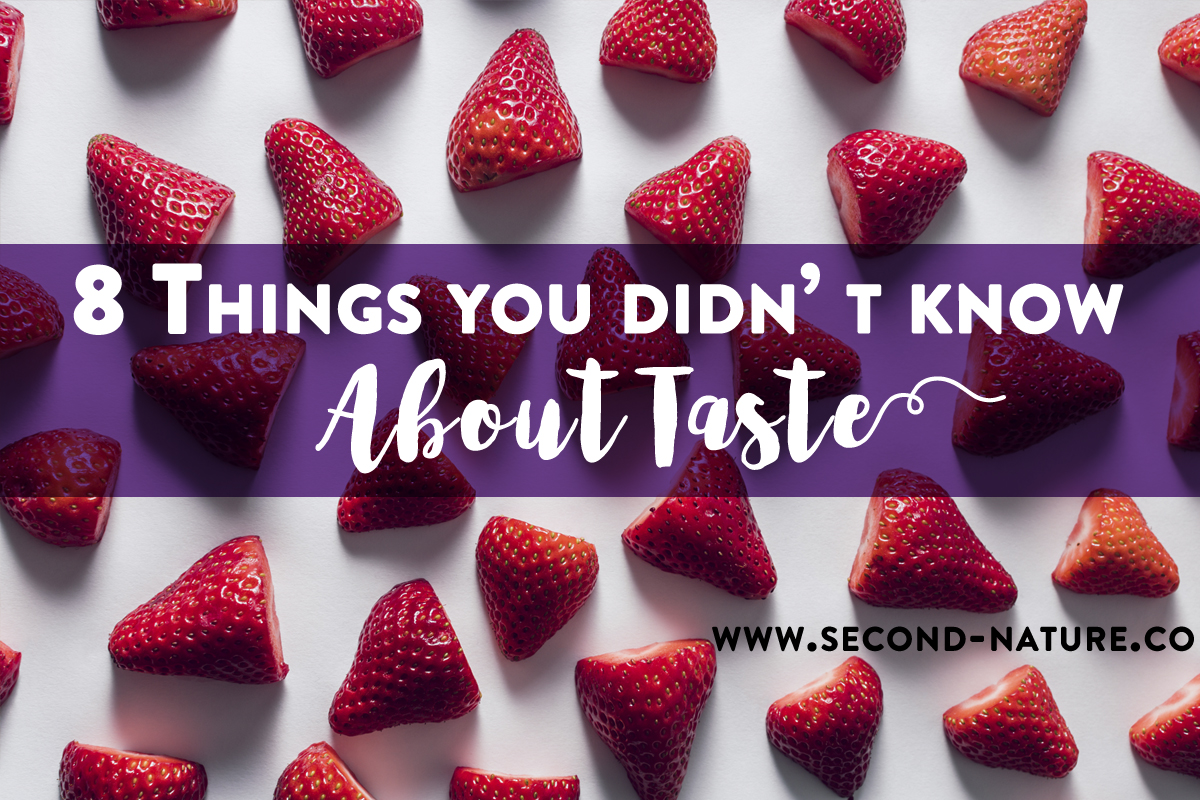
Lately, I have been immersing myself in the science of taste and what makes us taste and experience food as part of some research I am doing. I must say it’s fascinating and at the moment I just can’t put this book down “Tasty – The art and science of what we eat”. Read on to enter the magic world of taste…
8 THINGS YOU DIDN’T KNOW ABOUT TASTE
1. Your taste buds aren’t just on your tongue; they’re on the roof, cheeks, and back of your mouth, even your esophagus. A full mouth experience!
2. 80% of what we experience as taste is actually smell! Talk about eating with your senses! Smelling our food gives us cues on its safety and provenience and prevents us from eating food that’s gone bad that could poison you. Do you remember ever having a cold and blocked nose and food being pretty blunt and tasteless? Yep, that’s because you can’t taste food without smelling it.
3. You also can’t taste what your saliva can’t dissolve: Saliva dissolves the chemicals in food allowing the receptors on your taste buds to detect taste. Without it, obviously, food is tasteless. To see (or taste) for yourself, dry your tongue with a paper towel and attempt to taste dry foods consisting of sugar and salt. It’ll be as if you were devoid of the sense altogether!
5. Taste perception fades with age 🙁 We lose almost half of our taste receptors by the time we turn 20! Babies have an incredible amount of synapses between ages of two and three (up to 15000 – whereas an adult has 8000 to 10000!) which makes their senses merge together and emphasize all experiences. They live in a world of overlapping experiences and memories can crossfade with taste and flavours. That’s why early a single taste can evoke entire moments from one’s childhood. Remember Marcel Proust’s “In search of the forgotten time”?
8. The classic tongue map is wrong. Remember that tongue map from school teaching you about where you taste sweet, salty, sour and bitter, and the newly added umami, from a Japanese word for “pleasant savory taste”, distinguished from saltiness? Well, it has nothing to do with the way we taste. “The average human tongue contains about 10 000 taste buds – tiny structures found on the visible papillae. While eating, a mix of food and drink in the mouth enters a bud via a single pore-like opening at its tip. A bud is a knotted clump of 50 to 80 specialised cells, each detecting one of the basics tastes.” Every single one of these cells will differentiate all tastes. Intense!
Hope you feel more knowledgeable now about the way you eat and perceive taste. Plus, you’ll have new trivia for your next dinner party 🙂
Until next time, keep it tasty!
Much love,
Denisa xxo





